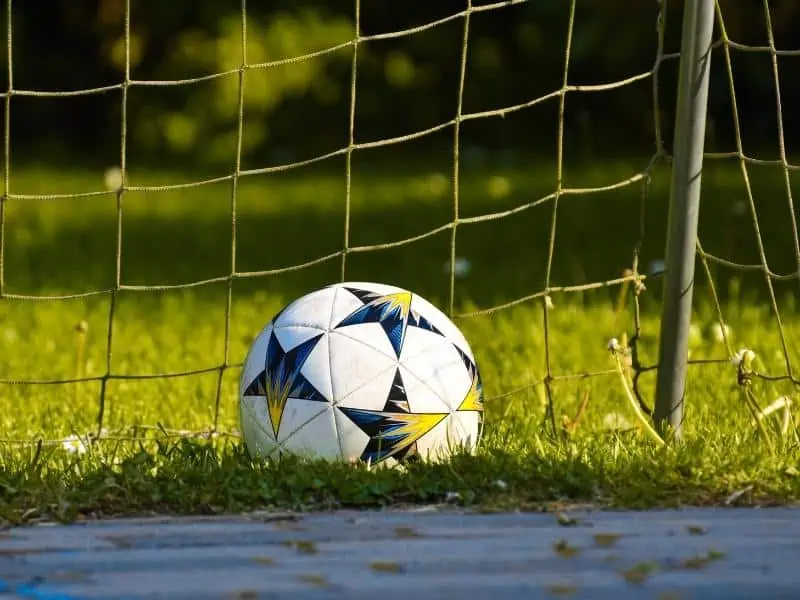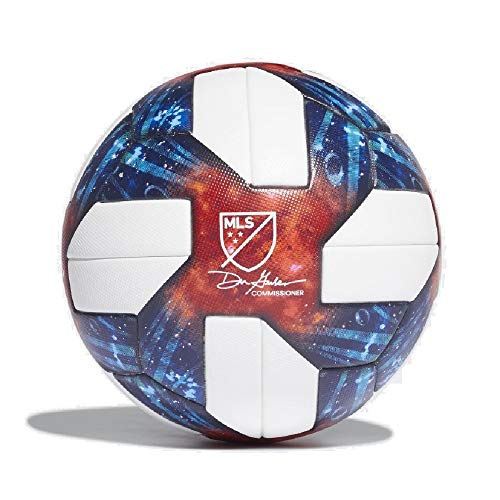Share the post "How Much Is A Soccer Ball (Don’t Pay More Than This)"
There are tons of companies out there that sell soccer balls of different sizes and qualities with different price tags. So, making an ideal choice by choosing a perfect soccer ball that’s suitable for your needs and budget can be overwhelming.
The cost of soccer balls can range from 20 to 300 US dollars depending upon their quality. You can even buy a bargain quality soccer ball for 10 to 20 US dollars whereas the higher quality soccer balls with size 5 can cost 40 to 100 US dollars.
On the other hand, if you are planning to buy soccer balls for a team then choosing premium balls will suit you the best. You can also buy a set of soccer balls in order to save money.
This article discusses everything you need to know about soccer ball costs and which one you should buy depending upon your needs. So, let’s get started.

Why Do Soccer Balls Costs Vary?
The soccer ball cost depends upon multiple factors such as the craftsmanship, overall design, company, materials used, size, and categories.
What Materials are Used to Make Soccer Balls?
Most soccer balls are constructed with synthetic leather, hybrid material, PVC (Poly Vinyl Carbonate), or PU (Polyurethane). Balls used for a match play are usually made with PU because they offer enhanced responsiveness and offer a soft touch.
If you’re looking for a durable option, then you should go with PVC balls as they save money in the long run. They can last a long period of time and feel a bit harder and are usually used for training.
When it comes to ball bladders there are two main types known as latex and butyl. The soccer balls with a butyl bladder are great at retaining their air. You won’t need to pump them frequently as they keep their shape for a longer time to maintain a consistent play.
On the other hand, the latex bladders ensure softer touch and are usually used in premium match balls.
Soccer Ball Cost Breakdown
Different manufacturers make soccer balls with different ball tiers that define the weight, quality, and most importantly the price of the product. The top tier balls are usually hand made and the lower tiers are machine stitched.
It’s important to note that each manufacturer uses its own names to describe different tiers. However, the build quality of the same tier across multiple manufacturers remains the same. Usually, the soccer balls are divided into the following 4 tiers.
Premium Match Balls
The premium balls are usually FIFA quality pro certified which means that these balls pass 7 different tests that include size and shape retention, pressure loss, water absorption, bounce effect, roundness, circumference, and weight.
These balls are usually made of polyurethane for better resistance against wear and tear.
They come with a thermally fused or bonded construction, weather resistance coating, and light texture. Lastly, the bounce and shape accuracy is retained with reinforced rubber bladders.
Nike calls the balls of this tier “Flight” and Adidas and PUMA name their tier balls “Pro” models.
- Price: 100 to 300 US dollars
- Good for: Professionals looking for ultimate performance.
- MLS 2018-19 OMB White 5
Product: Updated 2024-07-24 | Images: Amazon Product Advertising API | #ad - soccerblade.com is an Amazon Associate
High-Quality Balls
This is the second tier of soccer balls that are usually FIFA certified and used in local competitions. Colleges and high school sports organizations use this type of soccer balls and they’re also made of Polyurethane.
They can last long and also feature temperature and wear and tear resistance with better elasticity. You’ll need to ask for “Club” balls if you’re buying them from Nike. The Adidas name for these soccer balls is “Competition” and “Match” for Puma.
- Price: 50 to 150 Us dollars
- Good for: College matches and professional training.
Good Quality Balls
These are the most commonly used type of soccer balls. They offer high durability but it mainly depends upon the manufacturer. The material that’s used to make soccer balls of this tier is called TPU (Thermoplastic Polyurethane).
It is a strain and stress-resistant material that’s considered to be environmentally friendly and can withstand plenty of bounces and kicks because of good elasticity. However, these soccer balls are machine-stitched and come with standard rubber bladders.
You can use soccer balls of this tier for semi-competitive marches for players who play seriously. The cost of good-quality balls is also affordable and Nike calls these balls “Strike”, Adidas “League”, and PUMA “Trainer”.
- Price: 20 to 50 US dollars
- Good for: Most commonly sold types of soccer balls all around the world because of durability and affordability. Can be used for college soccer team training and casual plays.
Bargain Quality Soccer Balls
The technology and material quality drop with each trier. This type of soccer ball is the most affordable one and Nike offers two different classes for these soccer balls called “Pitch” and “Skills Tier”. However, the Adidas name for these balls is “Training”.
These soccer balls are best for young and new players and they’re also used for recreational purposes.
- Price: 10 to 20 US dollars
- Good for: Moderate use by casual players. Also, a good option if you need to buy soccer balls for 2 to 5 years old kids
Are Expensive Soccer Balls Worth It?
As mentioned, you should buy a soccer ball depending upon your needs and budget. If you’re looking to buy a ball for professional training then expensive products will suit you the best because of the following soccer ball features.
- They’re the best soccer balls in terms of quality.
- They respond with precision when kicked.
- They provide a better grip while dribbling.
- They remain stable in the air.
- They ensure optimal performance and long life.
- They feel light and soft and feel comfortable on bare feet.
- They can be used on both grass and firm ground.
What is the Average Cost of a Soccer Ball Per Year?
The average cost of a soccer ball per year depends upon your use. For example, a soccer ball will last longer if you’re buying it for a toddler or kid of 5 years because children don’t kick the ball as hard as an adult does.
So, if you buy a soccer ball for 30 US dollars for an adult then it’ll probably last for a year. On the other hand, the same quality soccer ball for a kid can last for up to 3 years costing you 10 US dollars a year.
Soccer Match Balls Cost Vs Training and Practice Balls Cost
The soccer ball manufacturers put less emphasis on the life of the official match ball as they’re used for less time. They’re specially designed for ultimate performance and come with a hefty price tag.
On the other hand, the balls designed specifically for practice and training come with a lower price tag as compared to balls made for playing matches. These balls are more durable and contain an extra foam layer. It allows these balls to stand up to the long practice sessions’ wear and tear.
What About the Cheapest Soccer Balls?
The following are some of the cheapest soccer balls that you can buy. However, you need to keep in mind that they won’t be as durable as high-quality balls and you might need to buy them frequently depending upon your use.
- Champion Sports Viper Soccer Ball: 8.09 US dollars
- Aoneky Mini Kids Size 3 Soccer Ball: 9 US dollars
- Adidas Unisex-Adult MLS Club Soccer Ball: Starting at 12 US dollars
- Wilson NCAA Copia II Soccer Ball: Starting at 17 US dollars
- MLS 2018-19 OMB White 5
Product: Updated 2024-07-24 | Images: Amazon Product Advertising API | #ad - soccerblade.com is an Amazon Associate
Share the post "How Much Is A Soccer Ball (Don’t Pay More Than This)"
Joel is a seasoned soccer journalist and analyst with many years of experience in the field. Joel specializes in game analysis, player profiles, transfer news, and has a keen eye for the tactical nuances of the game. He played at various levels in the game and coached teams - he is happy to share his insight with you.




